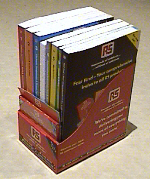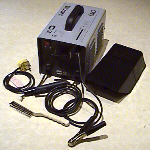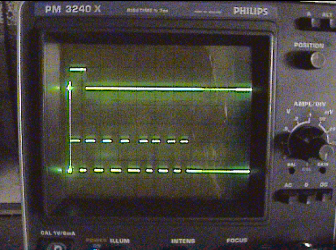March 2001
Wednesday 7th March 2001
Not much building has gone on over the last two weeks since I've had the flu, but three acquisitions have taken place recently.
| Firstly, a very nice lady at RS components has made my life substantially less frustration by kindly sending me a set of the new RS catalogues. Their web site is all very well and good, but you do spend an awful lot of time waiting for pictures and details to download. Flicking through the paper catalogues is immeasurably faster and less frustrating. Thank you Margaret for bending the rules a bit for me! |  |
| Secondly, I have decided to buy a small arc welder so that I can do some small welding jobs as well as my Dad. By pure chance I surfed the Internet for welders and was pointed towards www.arcwelders.co.uk. This site was in fact part of a site under the heading www.toolsonline.co.uk, and has a whole host of very competitively priced tools including welders of various types and sizes, air compressors, power tools, saws, tool boxes, garden tools, etc., etc.. What's more the prices shown are inclusive of VAT and free delivery within the UK mainland. The arc welder prices were considerably cheaper here than with those nice people at RS. |  |
| Thirdly, a friend of a friend had a spare oscilloscope that they had hardly used over recent years, and were happy to sell me for a very reasonable price. This will help my diagnostics no end, and reduce the number of dead MOSFETs considerably (I hope). Thanks Alan for doing me such a good deal. |  |
Tuesday 14th March 2001
| I had my first play with the oscilloscope to check whether my
assumptions about the radio receiver were correct. I wanted to reduce the
number of inputs my micro-controller needed to check in order to establish what
each of the receiver channels was doing. On the right is the display of the two
signals I will be monitoring. The top trace is the channel 1 signal. The bottom
trace is the combined pulse train for all the receiver channels. Each positive
transition on this bottom trace signals the end of the previous channel and the
beginning of the next one. By taking a note of the time of each transition, the
value for the channels can be measured. Synchronisation is achieved by checking
if the channel 1 signal (upper trace) is high just after a transition. If it
is, then we know where we are. . |
 |
I really must get on with rebuilding the new motor controller circuit and micro-controller interface circuit, now that I have confirmed my assumptions about the receiver with the oscilloscope.
Wednesday 28th March 2001
I collected the first attempt at the chassis from my Dad who had welded the base components together. When I got it home and positioned the main components in place, I realised that I could reduce the overall size of the chassis quite a bit my moving some of the items closer together. This will also reduce the weight of the robot which I'm sure I will be glad of towards the end of the build.